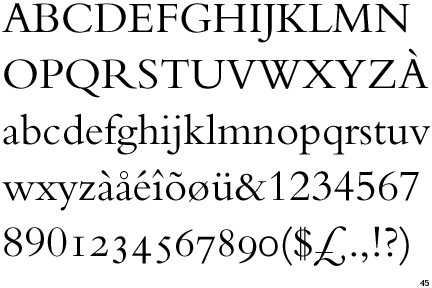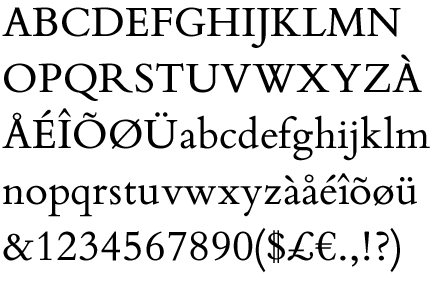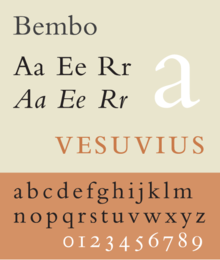Bembo
The Bembo is one of the major fonts. It formed the basis for the better-known Garamond, but has more angular serifs than this.
The original Bembo was cut by the Venetian Francesco Griffo for printing the treatise De Aetna of the young humanists and later Cardinal Pietro Bembo. This work was published in February 1496 ( after the then Venetian Calendar 1495 ) in the printing of Aldo Manuzio. The italicized section is, however, from a pattern book of the Italian artist Giovanni write Tagliente of 1524.
After these templates Bembo used today was built in 1929 by the font designer Stanley Morison (according to other sources of Alfred Fairbank ) for the company Monotype redrawn and named it after Bembo. While monotypes original letterpress versions as the original had the pronounced ascenders in the letters b, d, f, k and l, these have been reduced in most of the currently available variants for the computer to cap height.
Original section of Bembo with long ascenders
As part of the Medieval Unicode Font Initiative David J. Perry has created the equipped with extensive dismounted range of characters font Cardo, which closely follows the classic Bembo.
Classification of Scripture
- According to DIN 16518 the Bembo is in group II ( French Renaissance Antiqua )
- After Wolfgang Beinert it belongs to group 1, subgroup French Renaissance Antiqua










